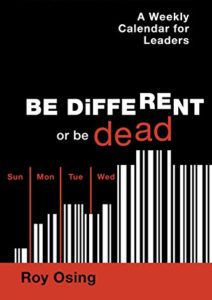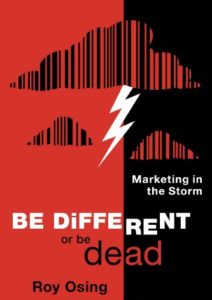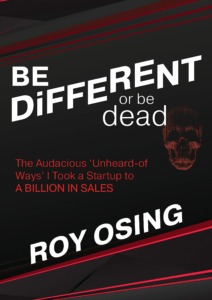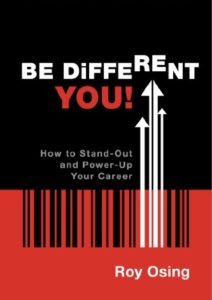Most cultures I know strive to get things right, and this is an admirable goal on which to mold employee behavior. But most organizations don’t always get it right the first time; unintended mistakes sometimes happen and customers are left disillusioned and angry.
What most organizations don’t understand is that anger can be turned into adulation; “going postal” can be transformed into hugs. But this knowledge is rarely leveraged to develop a component of culture that is critical to sales success.
There are two actions that every organization should take given the eventuality of a mistake-ridden operation that drives customers crazy.
First, ensure internal systems, rules and procedures are designed to make it easy for the customer to engage with and do business with you. Design your “inside” with the customer in mind so they have a pleasant experience with you, not a nightmare.
Second, given the fact that Murphy’s Law is always lurking in the shadows poised to strike, develop a strategy to deal with customer screw ups. Most organizations don’t even think about determining the appropriate course of action when customer engagement goes sideways; they hope and pray it doesn’t happen and put all their resources and energy into preventing its occurrence.
Prevention, as a singular approach, won’t work; it will help, but it will never avoid the unintended mistakes that make a customer go nuts.
Leaders should view dealing with customer complaints as a priority and as a vital component of the organization’s strategy to build a culture that differentiates themselves from their competition.
Every customer “anger moment” is disguised as an opportunity to improve the strategic position of an organization if the customer is handled the right way.
Customer anger management 101: 3 guiding principles
There are 3 overriding principles that need to be understood to achieve the benefits of anger.
Recovery builds loyalty — recovering the right way from an angered circumstance can improve the relationship you have with the person that has gone ballistic.
If an organization recovers from a complaint exceedingly well, the customer is delighted, and they are more committed to the organization than they were before the anger episode. They remember the recovery not so much the problem that caused it.
Speed is of the essence — the screw up needs to be fixed FAST. When you have committed an egregious act the customer expects their complaint to be rectified, but it must be done quickly.
Studies have shown that you have at most 24 hours to repair your blunder; after that period you’ve missed the opportunity to be in the game for a hug. If immediate action is not taken, the hug never comes and your victim typically communicates far and wide how disastrous your service is and the crummy values you have as an organization.
Give them what they DON’T expect — Do more than fix the mistake; SURPRISE the customer. Even if the OOPS! is dealt with expeditiously, all you’ve done is met their expectations.
It’s the SURPRISE element that turns them from “expectations met” to leaning in for a hug. The SURPRISE is the magic dust that amazes and delights the victim; leaves them awestruck, delighted and breathless. And it bonds them to you more than they were before the OOPS!
Anger moment tactics
These anger management tactics consistently practiced in every anger moment will earn a hug and build a band of genuine loyalists.
Apologize
Apologize regardless of whose fault it is. Trying to blame the customer for the event won’t get you a hug. Apologize for the impact the event had on the customer. “I’m sorry for the inconvenience this has caused you” is a way to move forward into the recovery process without having to admit culpability for the OOPS! And when it’s your fault own it! Your currency in the customer’s eyes depends on your honesty.
Shut up about company policy
NEVER quote company policy to justify what was done to anger the customer. EVER! People don’t care about them, and to remind them that they “don’t understand” how you do business and that they should have behaved differently will only make them crazier.
Don’t escalate the problem
NEVER have the issue referred to a supervisor as a means of control; empower your employees to solve the problem then and there. This gives your employees currency in the customer’s eyes and enables a fast resolution of the complaint. And gets you closer to a hug.
Personalize your SURPRISE
NEVER use common “trash and trinket” items as the surprise vehicle you use to move beyond merely fixing the OOPS! People hate them. Develop a list of more personal surprise tokens that employees can choose from depending on what they learn about the customer during the complaint experience.
Have humans ready
Have a real person standing by any of your self serve applications. Complaint recovery cannot be suitably handled through automated systems. When is the last time you enjoyed being served by technology – like an automated voice messaging system – when you had a problem with an organization?
Every organization looks for an edge over their competitors, but most of them miss an obvious strategy that can truly separate them from the herd.
Be the ONLY one that leans into customer anger and takes its energy to earn a hug — hugs breed sales success.



















Comments